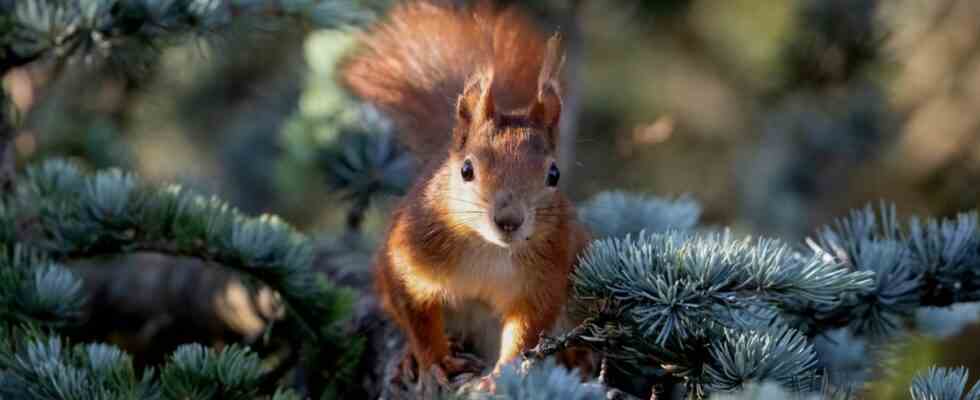For those who enjoy watching squirrels frolic high in the trees, the best time to do so is during the cold months. Then the beeches, oaks and all the other deciduous trees, in whose crowns the rodents stay most of the time, are without foliage. In addition, the diurnal animals with the large, bushy tail are not afraid of people. Squirrels, or Sciurus vulgaris, as they are called scientifically, are descendants of humans. You can find them practically everywhere, in the countryside as well as in big cities. The only important thing is that they have sufficiently large, old trees to retreat to and seeds, nuts, chestnuts and other tree fruits to eat.
As well-known as squirrels are, little is known about them. That starts with inventory. No one can give even an approximate order of magnitude. The only thing that is certain is that the numbers fluctuate greatly from year to year. The Bund Naturschutz (BN) has therefore been running a so-called citizen science project in Bavaria since 2020. Laypersons can use the app or the Internet to report to the BN when and where they observed squirrels. “Of course, we can’t determine any absolute figures with this,” says project manager Martina Gehret. “But we can see trends.”
In the first three years, the extreme range of fluctuation in the population was confirmed. A total of 45,000 squirrels have been reported across Bavaria. In 2020 there were 10,300, in 2021 with 22,500 more than twice as many, and in 2022 with 12,500 again only a good half of them. Three years is not enough for reliable statements about the reasons for the fluctuations. But Gehret is convinced that the record heat in 2022 and the resulting food shortages have something to do with it.
“Currently, observations are mainly coming in from city gardens and parks,” says Gehret. “These are places where the tree’s seed cycle changes frequently.” If there is little food there in a hot year, many squirrels immediately migrate. When the food supply improves again a year or two later, some return.
The BN rules out one thing: that native squirrels are increasingly being pushed out by North American gray squirrels, as is often said. The latter are considered to be more adaptable and robust, they also carry pathogens that are dangerous for native rodents. According to BN, gray squirrels have not yet been detected in Germany. However, in Great Britain, where they were introduced in the late 19th century, they have practically supplanted the squirrels.

